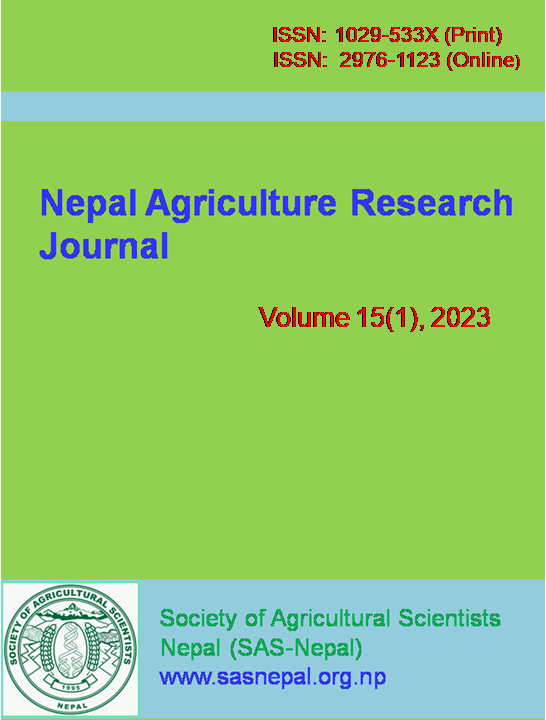Evaluation of panicle architecture traits in rice genotypes using PTRAP
DOI:
https://doi.org/10.3126/narj.v15i1.51533Keywords:
Rachis length, Rice, Panicle architecture, Panicle length, Grain yieldAbstract
An experiment was conducted with the objective of evaluating panicle architecture traits of different genotypes of rice in relation to yield during June to November 2020. The experiment was conducted in randomized complete block design with three replications and forty-two treatments. The graphical user interface used image analysis tool Panicle Trait Phenotyping (PTRAP) was used to record architecture and yield related traits. Among genotypes, the highest yield was found in high yielding late variety Sampurna (6.1t/ha) with highest number of both primary (16.33) and secondary branches (53.33). Four different types of panicle size-irregular, conical, diamond like and pyramid shaped panicle were identified in 42 genotypes. Correlation analysis revealed significant (p=0.05) and positive correlation of grain yield with architecture traits i.e., number of primary branches (r=0.88), length of primary branches (r=0.89), number of secondary branches(r=0.69), number of nodes (r=84). The correlation between spikelet number and other variables related to number of primary branches was higher than correlation with variables related to length of primary branch. The increase in number of panicle rachis length, number of primary and secondary branches and length of primary branches resulted in increased spikelet number per panicle and grain yield. It can be concluded the architectural traits like rachis length, number of primary secondary branches, and secondary branches and length of primary branches were the most important in improving panicle architecture and crop yield.
Downloads
Downloads
Published
How to Cite
Issue
Section
License
Copyright (c) 2023 Gautam and Shrestha

This work is licensed under a Creative Commons Attribution-NonCommercial-NoDerivatives 4.0 International License.
This license allows reusers to copy and distribute the material in any medium or format in unadapted form only, for noncommercial purposes only, and only so long as attribution is given to the creator.




